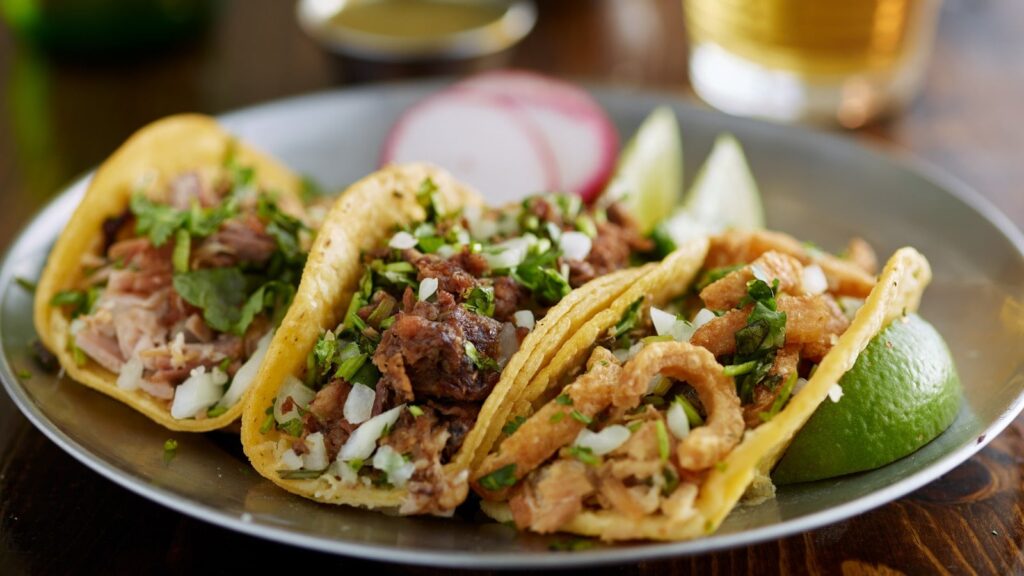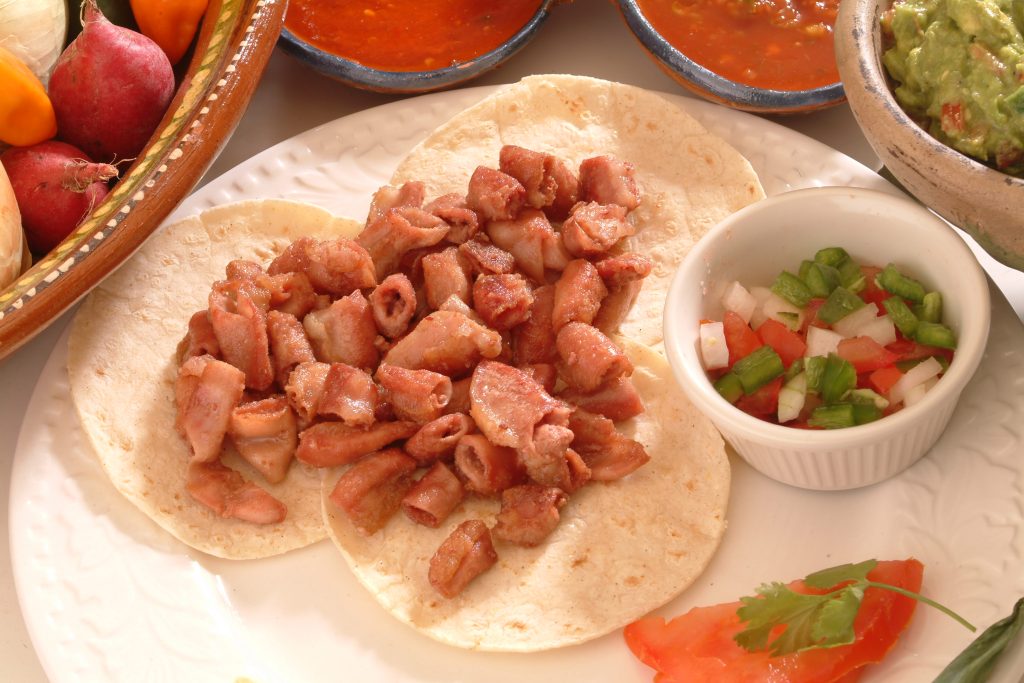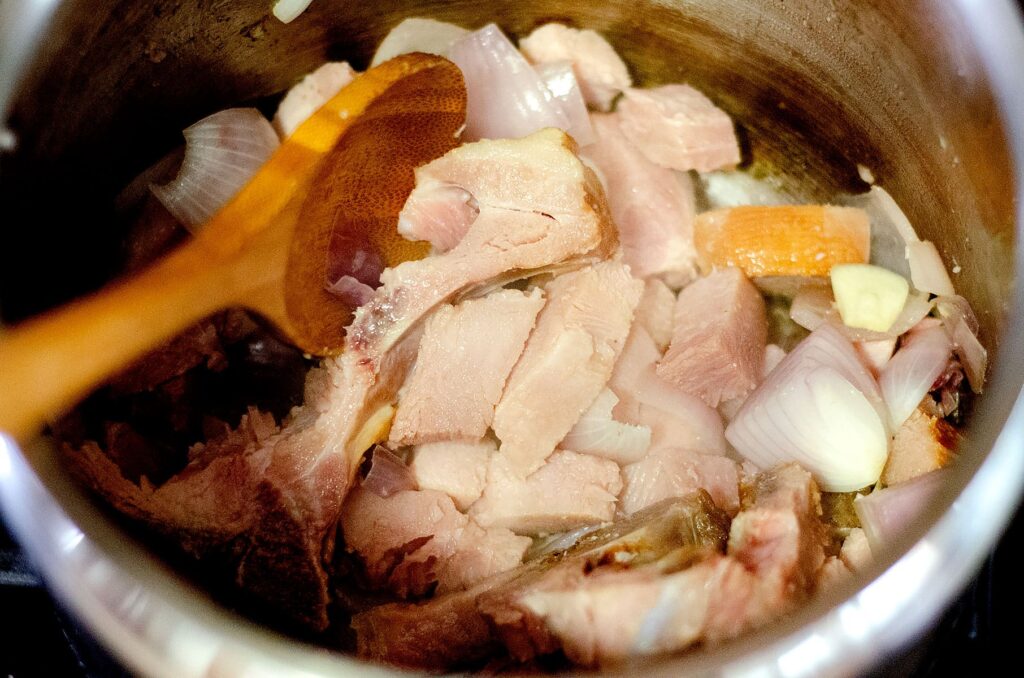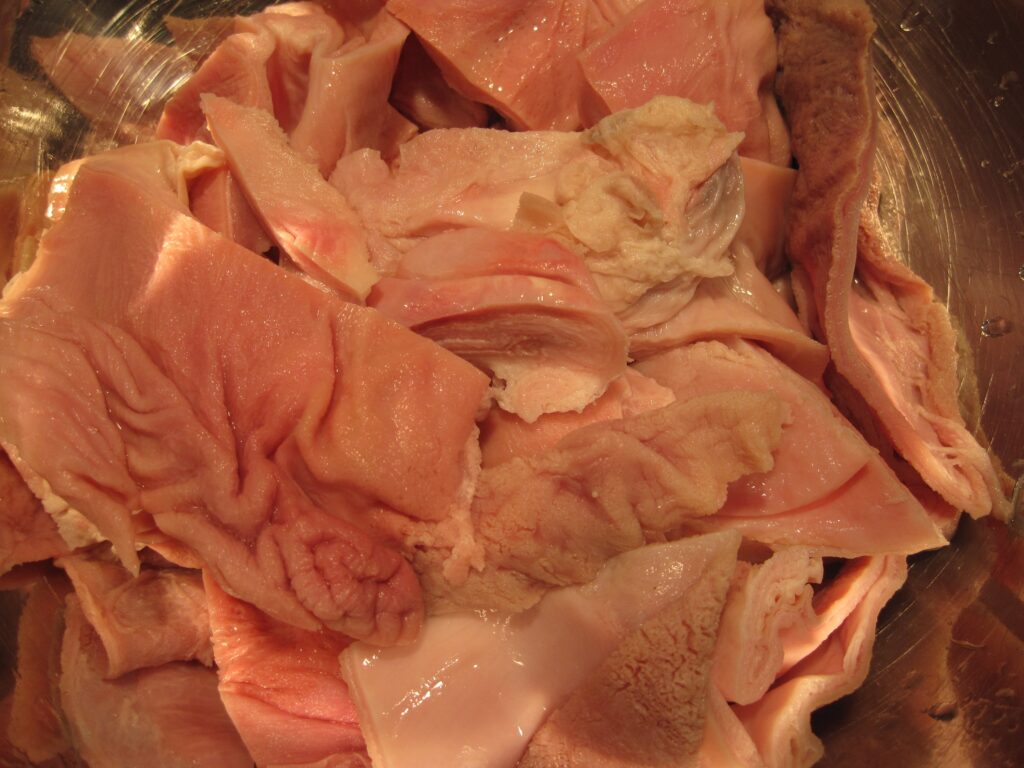The Delightful World of Buche Meat: A Culinary Journey
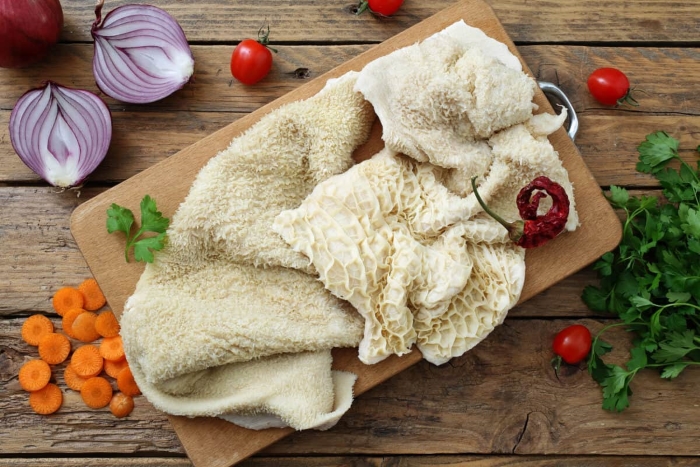
Buche meat, a culinary treasure originating from the belly and throat of a pig, beckons us into the coronary heart of Spanish gastronomy. Derived from the Spanish phrase ‘buche,’ meaning pig stomach, this offal unveils a rich tapestry of flavors, textures, and cultural significance. Beyond its anatomical roots, Buche represents a historic culinary exercise, showcasing the resourcefulness of conventional Spanish cooking.
In this exploration, we look into the wonderful qualities that set Buche apart, from its less chewy texture compared to trips to its fuller chunk than carnitas or barbacoa. The adventure takes us via the colorful world of Buche Tacos, a culinary journey that encapsulates nearby variations and traditions. Join us as we delve into the anatomy, traits, and preparation strategies that make Buche Meat a hidden gem in Spanish cuisine, inviting pro-fanatics and curious beginners to relish the delectable nuances of this often-neglected delicacy.
Definition of Buche Meat:
Buche, a delicacy derived from the belly and throat of a pig, holds a special vicinity in Spanish culinary traditions, presenting a unique combination of taste, texture, and cultural importance.
Origin and Etymology:
The phrase ‘buche’ unearths its origins in the Spanish language, especially which means ‘pig stomach.’ This period encapsulates the key anatomical foundation of the beef – the belly and throat of a pig. The etymology of ‘buche’ adds a cultural dimension to the information of this particular kind of offal.
Culinary records indicate that Buche has been part of Spanish cuisine for centuries. Its roots can be traced back to the careful usage of every part of the pig in conventional Spanish cooking, reflecting a resourceful and sustainable method of gastronomy.
Culinary Significance in Spanish Cuisine:
Buche, with its unique starting place inside the belly and throat of a pig, holds profound culinary importance in the tapestry of Spanish gastronomy. Beyond being an insignificant component, Buche Meat symbolizes the resourcefulness and creativity deeply ingrained in conventional Spanish cooking.
In Spanish cuisine, Buche is celebrated for its capacity to impart wealthy, deep flavors to lots of dishes. From sluggish-cooked stews to the cherished Tacos de Buche, this offal brings an awesome taste that distinguishes it from other cuts. Its culinary importance extends beyond the kitchen, playing a function in cultural celebrations and festive occasions.
The recognition of Buche displays the cultural connection that Spaniards have with their food. Its incorporation into traditional recipes and local versions highlights its role as a culinary cornerstone, contributing to the diverse and flavorful mosaic of Spanish culinary traditions. Buche stands not only as a testament to gastronomic creativity but also as a cultural emblem, connecting generations through the shared pleasure of delightful and specific flavors.
Understanding Buche Meat:
The Anatomy of Buche:
Stomach and Throat Origins: Buche, sourced from the belly and throat of a pig, presents a unique aggregate of flavors rooted in its anatomical beginning.
Distinctive Features:
- Less Chewy than Tripas: Buche gives a sensitive texture, much less chewy than tripas (pork tripe), improving its accessibility.
- More Bite than Carnitas or Barbacoa: After gradual cooking, Buche strikes a balance, offering a vast chew in comparison to carnitas (red meat shoulder) or barbacoa.
The Unique Qualities of Buche:
Texture:
- Less Chewy than Tripas: Buche gives a satisfying texture without excessive chewiness.
- More Bite than Carnitas or Barbacoa: Its particular texture promises a robust chew, distinguishing it from different gradual-cooked meats.
Color:
- Natural Hues and Variations: Buche’s herbal pigmentation adds a visible hobby with numerous colorations.
- Visual Appeal in Culinary Creations: The vibrant colorations decorate the presentation of dishes presenting Buche.
Flavor:
- Richness and Depth: Buche Meat’s flavor is characterized by using a rich and deep profile.
- Taste Profile Compared to Other Offal Meats: Its flavor stands proud in the assessment of different offal meats, contributing to its versatility in diverse culinary applications.
Buche Tacos: A Gastronomic Adventure:
Tacos de Buche:
- Traditional Preparation: Tacos de Buche, a culinary delight, undergoes meticulous coaching concerning the cleansing and sluggish cooking of Buche. Seasoned with traditional spices, the beef is encased in warm tortillas and garnished with onions, cilantro, and colorful salsas, growing a flavorful masterpiece.
- Regional Variations in Taco Styles: The versatility of Tacos de Buche extends throughout areas, each adding its aptitude. From the zesty lime and avocado garnishes in Mexico City to seafood-stimulated salsas at the Andalusian coast, nearby variations exhibit the adaptability of Buche in numerous culinary landscapes.
Buche vs. Other Offal Tacos:
Tacos de Lengua (Beef Tongue):
- Contrasting Textures and Tastes: Tacos de Buche and Tacos de Lengua provide wonderful textures; Buche’s much less chewy nature contrasts with the tender, melt-in-your-mouth first-rate beef tongue.
- Culinary Preferences and Traditions: Culinary traditions affect preferences, with Buche attractive to the ones seeking a heartier bite, even as Tacos de Lengua reveals choice among those appreciating tender, sluggish-cooked beef tongue.
Characteristics of Buche Meat:
Texture
Exploring the Tender Yet Distinctive Texture:
Buche boasts a texture that is gentle and different, setting it aside inside the realm of meats. The cautious selection of stomach and throat contributes to a soft exceptional, ensuring a delightful eating experience. Exploring this texture reveals stability between tenderness and a unique bite, growing a culinary canvas that chefs and fanatics can use to craft diverse dishes.
Tips for Optimal Texture in Cooking:
Achieving the surest texture while cooking Buche requires precision and interest in detail. Slow cooking is a desired method, permitting the beef to tenderize at the same time as maintaining its one-of-a-kind characteristics. Additionally, marinating Buche Meat in flavorful seasonings earlier than cooking complements both tenderness and flavor. These recommendations ensure that every bite of Buche delivers a harmonious mixture of textures, making it a versatile factor in numerous culinary creations.
Color:
Natural Pigmentation:
The herbal pigmentation of Buche contributes to its visible attraction. Ranging from faded tones to richer colorings, the beef’s color palette provides vibrancy to dishes. The inherent pigmentation is a testimony to the first-rate freshness of the beef, reflecting the animal’s diet and general proper-being. Exploring the herbal pigmentation of Buche offers insights into its beginning and lets in a visual appreciation of the ingredient.
Significance in Presentation and Culinary Artistry:
The color of Buche Meat holds importance within the presentation of culinary creations. Chefs leverage the varied colors to create visually appealing dishes that stimulate both the urge for food and the senses. Whether included in tacos, stews, or other recipes, the natural pigmentation of Buche turns into an important detail within the culinary artistry that defines each plated masterpiece.
Flavor:
Depth and Intensity of Buche Flavor:
Buche’s taste profile is characterized using fantastic depth and intensity. The inclusion of each belly and throat imparts a savory richness that distinguishes it from other meats. Exploring the depth of Buche flavor’s famous complicated layers that unfold with every chew, creates a culinary revel that lingers on the palate.
Complementary Ingredients to Enhance Taste:
To decorate the taste of Buche, cooks regularly include complementary ingredients that increase its taste profile. The richness of Buche pairs well with spices, herbs, and acidic elements. Ingredients like garlic, cumin, and citrus beautify the savory notes, developing a harmonious symphony of flavors. This exploration of complementary substances lets chefs unlock the overall capability of Buche Meat, resulting in dishes that are not handiest scrumptious but also a celebration of culinary creativity.
Cooking Techniques and Recipes:
Stewing Buche for Optimal Results:
- Recommended Cooking Time: For optimal tenderness and taste infusion, stewing Buche requires a sluggish and steady method. An advocated cooking time of two to a few hours over a low simmer lets in the beef to soak up rich flavors, resulting in succulent and deeply flavorful effects.
- Balancing Flavors in the Stewing Process: Achieving a well-rounded dish includes cautiously balancing flavors all through the stewing technique. Adding aromatic spices, herbs, and seasonings inclusive of garlic, onion, cumin, and bay leaves complements the broth, preventing any unmarried taste from dominating. A contact of acidity from substances like tomatoes or citrus brightens the flavors, developing a harmonious and fulfilling culinary level. This meticulous balance guarantees that the stewed Buche turns into a gastronomic masterpiece that captivates the palate.
Buche Tacos Recipe:
Ingredients:
- 1 pound Buche Meat, wiped clean and diced
- 1 onion, finely chopped
- 3 cloves garlic, minced
- 1 teaspoon floor cumin
- 1 teaspoon smoked paprika
- 1 teaspoon dried oregano
- Salt and pepper to taste
- 1/2 cup chicken or vegetable broth
- Corn tortillas (as needed)
- Fresh cilantro, chopped, for garnish
- Lime wedges, for serving
- Salsa, P.C. De Gallo, or your preferred taco toppings
Step-by-Step Cooking Instructions:
Preparation:
- Ensure the Buche is very well cleaned and diced into chunk-sized portions.
- In a small bowl, blend the floor cumin, smoked paprika, dried oregano, salt, and pepper to create a seasoning combo.
Sautéing Buche Meat:
- Heat a skillet over medium-high heat and add a piece of cooking oil.
- Sauté the chopped onions till translucent and aromatic.
- Add minced garlic and sauté for an additional minute until aromatic.
- Incorporate the diced Buche into the skillet and sear until browned on all facets.
Seasoning and Simmering:
- Sprinkle the seasoning mixture over the Buche, making sure it has an even coating.
- Pour in the hen or vegetable broth to deglaze the pan, scraping up any flavorful bits.
- Reduce the warmth to low, cowl the skillet, and permit the Buche to simmer for approximately 2-three hours, or till soft.
Assembling Tacos:
- Warm corn tortillas in a dry skillet or microwave until pliable.
- Spoon the stewed Buche onto every tortilla.
- Garnish with fresh cilantro and serve with lime wedges on the facet.
Tips for Perfecting Buche Tacos at Home:
- Marinate for Flavor: Consider marinating Buche with the seasoning combo for a few hours earlier than cooking to beautify flavor penetration and infuse intensity.
- Customize Toppings: Provide an array of toppings which include salsa, guacamole, or shredded cheese for diners to personalize their Buche Tacos in keeping with their taste possibilities.
- Experiment with Tortillas: Explore unique types of tortillas, which include flour or complete-grain alternatives, to discover the perfect vessel in your Buche Tacos and upload an extra layer of flavor.
- Serve with Vibrant Sides: Accompany your Buche Tacos with colorful aspect dishes like Mexican rice, beans, or a clean salad to create a nicely balanced meal and complement the wealthy flavors of the beef.
- Garnish Thoughtfully: Fresh cilantro, lime wedges, and a lot of salsas can raise the visible appeal and flavor profile of your Buche Tacos. Experiment with special garnishes to find out your selected combination.
The Cultural Significance of Buche Meat:
Buche in Spanish Celebrations:
- Festivals and Culinary Events: Buche takes center stage in Spanish galas and culinary occasions, wherein its inclusion in traditional dishes turns into a spotlight. Whether it is a vibrant street fair or a grand culinary exhibit, Buche adds a hint of authenticity, drawing locals and visitors to enjoy its specific flavors.
- Symbolism and Traditions: Beyond gala’s, Buche holds symbolic significance in various traditions. Its presence in celebratory dishes symbolizes prosperity, unity, and communal spirit. Preparing and sharing Buche-primarily based meals for the duration of unique occasions turns into a cultural ritual that strengthens bonds and reinforces the connection to culinary traditions.
Buche in Modern Culinary Trends:
- Fusion Cuisine and Innovative Dishes: Buche unearths an area in present-day culinary developments through fusion cuisine. Creative cooks are incorporating Buche into revolutionary dishes, blending conventional Spanish flavors with global effects. This experimentation introduces Buche to a broader target audience, showcasing its versatility and adaptability in current culinary landscapes.
- Popularity in Foodie Circles: Buche Meat has received popularity among food enthusiasts and connoisseurs who respect particular and real gastronomic reports. Through social media platforms, food bloggers, and culinary influencers, Buche has located a spotlight inside the foodie community. Its visible enchantment, exclusive traits, and wealthy cultural backstory make it a compelling concern for the ones seeking culinary adventures past the mainstream.
Additional Tips:
- Source from Reliable Suppliers: When in search of Buche, make certain you supply it from official suppliers or nearby butchers who prioritize excellence. This ensures the freshness and authenticity of the beef, contributing to a greater fun culinary level.
- Ask for Preparation Advice: If you are new to cooking with Buche, do not hesitate to invite your butcher for training advice. They can provide valuable insights into cleaning, trimming, and seasoning Buche Meat to decorate its flavors.
- Explore Culinary Resources: Expand your know-how of Buche using exploring culinary resources which include cookbooks, online recipes, and professional meal blogs. This permits you to discover quite a few cooking techniques and innovative recipes that showcase the flexibility of Buche in distinct dishes.
- Consider Cultural Context: Understanding the cultural context of Buche adds depth to your appreciation of the aspect. Explore Spanish culinary traditions, regional versions, and the position of Buche in celebrations to decorate your connection with the cultural significance of this offal.
- Experiment with Different Cuts: Buche comes from the belly and throat, but you may test with specific cuts to discover your preferred version. Whether it is the belly lining or particular throat cuts, each part gives unique textures and flavors.
Conclusion:
In the tapestry of Spanish gastronomy, Buche Meat emerges as a culinary treasure that no longer most effectively delights the palate but also weaves collectively the threads of culture, celebration, and innovation. From its humble origins in the stomach and throat of a pig to its symbolic role in gala and cultural traditions, Buche encapsulates the essence of the Spanish culinary historical past. The journey through the gentle texture, vibrant colorations, and wealthy flavors of Buche unveils a narrative that spans centuries, connecting groups and families through shared food.
As it finds its place in current culinary developments, Buche continues to evolve, charming food fanatics and chefs alike. Whether savored in conventional Tacos de Buche or reimagined in fusion creations, Buche Meat stays a testimony to the long-lasting allure of Spanish cuisine, inviting all to embark on a gastronomic adventure that transcends time and borders.
FAQs:
Q1: What does the term ‘Buche’ imply in Spanish?
Ans: In Spanish, ‘Buche’ is interpreted as ‘pig stomach.’ It refers to a sort of offal or organ meat that comes from the stomach and throat of a pig.
Q2: How does Buche vary from different offal meats?
Ans: Buche Meat has a unique combination of tenderness and chunk, making it less chewy than pork tripe (tripas) and offering more substance than pork shoulder (carnitas) or sluggish-cooked beef, red meat, or lamb (barbacoa) after stewing.
Q3: What are the traits of Buche?
Ans: Buche is characterized by its gentle but exceptional texture, natural pigmentation contributing to colorful shades, and a taste profile recognized for its richness and depth. These qualities make Buche versatile in numerous culinary creations.
Q4: How is Buche traditionally prepared in Tacos de Buche?
Ans: Tacos de Buche are historically organized through cleaning and sluggish-cooking Buche Meat, seasoning it with traditional spices, and serving it in warm tortillas. Garnishes like onions, cilantro, and salsas add intensity to the taste profile.
Q5: What is the recommended cooking time for stewing Buche?
Ans: For top-of-the-line tenderness and taste infusion, stewing Buche generally calls for 2 to 3 hours over a low simmer. This slow-cooking process permits the beef to take in wealthy flavors and emerge as succulent.
READ MORE: Dappled Light in Painting: Unveiling the Artistic Magic

